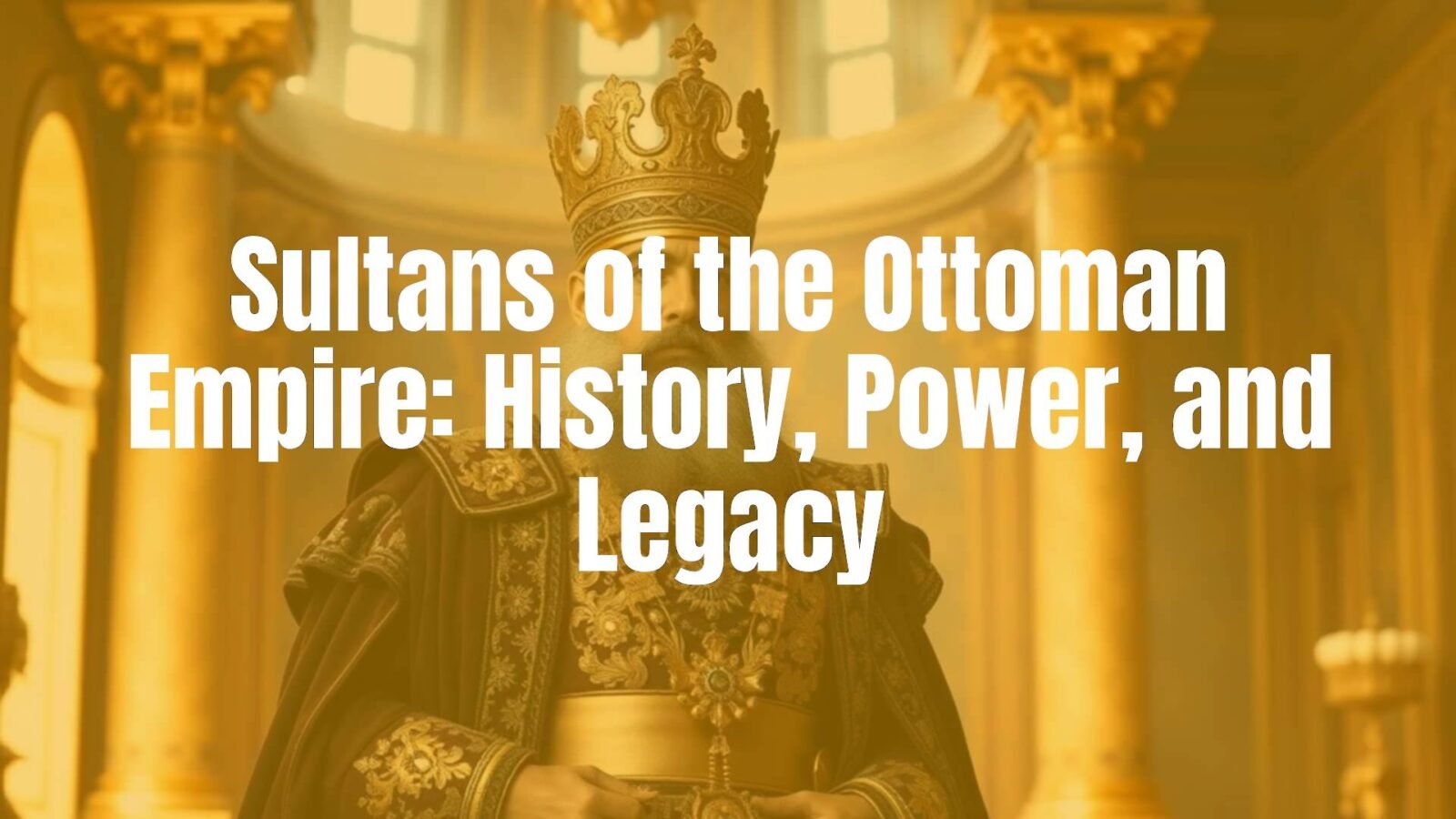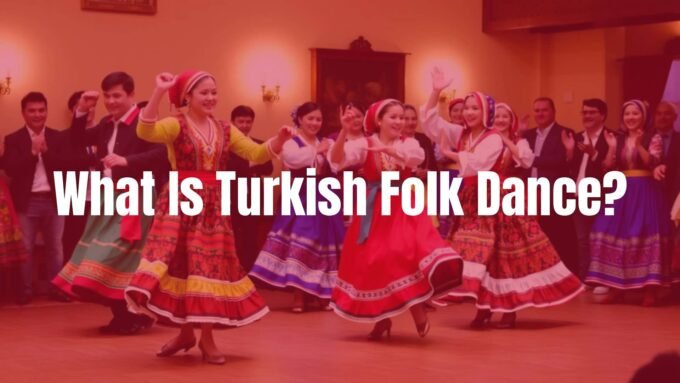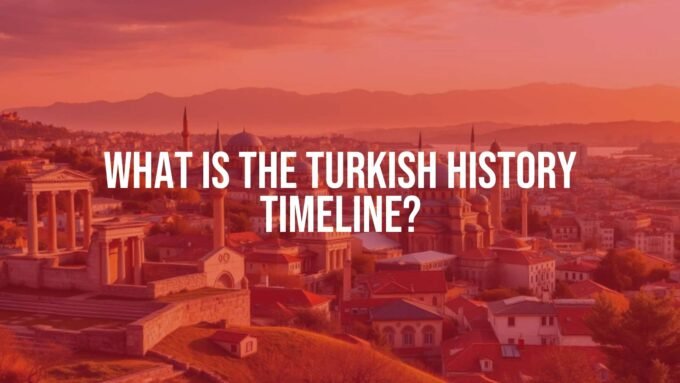The sultans of the Ottoman Empire were the hereditary rulers of one of history’s longest-lasting empires, ruling from around 1299 to 1922. These leaders, from the House of Osman, were more than kings; they were the highest political, military, legal, social, and religious heads of a huge empire that spanned continents. Their rule shaped the Ottoman lands-at its height from Hungary in the north to Yemen in the south, and from Algeria in the west to Iraq in the east-and left a lasting mark on world history, culture, and government.
The role of the sultan changed a lot over time, from the early days as leaders of a small Anatolian beylik to rulers of a large empire that rivaled European powers. Each sultan, with his own character and goals, influenced the empire’s path through conquest, reform, or periods of unrest. Learning about the Ottoman sultans helps explain the empire’s rise, peak, and decline.
Who Were the Sultans of the Ottoman Empire?
The Ottoman sultans were the heads of the House of Osman, tracing their line back to Osman I, the founder. Over more than six centuries, 36 sultans guided-and sometimes struggled with-the fate of an empire that strongly shaped world events. They were the highest authority and stood for the Ottoman state itself.
Starting from simple Anatolian roots, they grew from local warlords into rulers of a vast Islamic caliphate. The long, unbroken rule of their family shows the strength and flexibility of the Ottoman system, even as the sultan’s power changed with new pressures and times.
Titles and Names Used by Ottoman Sultans
Ottoman rulers used a range of titles and names that changed over time as their power grew and as they claimed God-given rule. “Sultan” became the steady title used by Ottoman rulers from early on, but they added other titles to set themselves apart from lesser Muslim rulers.
Murad I, the third Ottoman ruler, called himself sultân-ı âzam (the most exalted sultan) and hüdavendigar (emperor), titles borrowed from the Anatolian Seljuqs and Mongol Ilkhanids. His son, Bayezid I, used “Sultan of Rûm,” with “Rûm” referring to the Roman Empire, as a claim to imperial legacy. Over time, a common style appeared that mixed Islamic and Central Asian roots: “Sultan [Name] Khan.” In modern Turkish, “padishah” is often used for these rulers. In European languages, especially in the 16th century, the sultan was called the “Grand Turk” or “Great Lord” (il Gran Signore, le grand seigneur), showing his strong reputation abroad. After the conquest of Constantinople in 1453, sultans more often saw themselves as heirs to Rome, sometimes using titles like “caesar of Rûm” and “emperor.” They also held the title “caliph of Islam,” signaling leadership of the Muslim community, a claim that became more important from the 18th century as they tried to rally Muslims against European expansion.
- Common core title: Sultan
- Imperial styles: Padishah; “Sultan [Name] Khan”
- Roman legacy claims: “Sultan of Rûm,” “Caesar of Rûm,” “Emperor”
- Religious leadership: “Caliph of Islam”
- European labels: “Grand Turk,” “Great Lord”
How the Role of Sultan Evolved Over Time
The sultan’s role changed across six centuries. In the early years, the sultan was a warrior-leader who rode with his army and pushed the borders outward. This period, part legend and part record, begins with Osman I laying the state’s base.
By the late 1400s, the sultan sat at the top of a very centralized system, holding political, military, legal, social, and religious power. While the law said his power was absolute and he answered only to God and Islamic law, in practice he had to listen to powerful family members, senior officials, the army, and religious leaders. The late 1500s brought a major shift often called the Transformation of the Ottoman Empire, when sultans took a smaller day-to-day role in governing. During the “Sultanate of Women,” leading women of the harem, especially the valide sultan (the sultan’s mother), played a key quiet role in politics. Later, the empire adopted a constitution under Abdul Hamid II. He began as the last absolute ruler and the first constitutional monarch, then ruled personally again, before being forced to bring back the constitution in 1908. Across time, the sultan moved from warrior-bey to absolute monarch to a more limited, sometimes symbolic, figurehead, reflecting deep changes in the Ottoman state.
How Was Succession Determined Among Ottoman Sultans?
Succession was very important and often led to hard fights and bloodshed. Unlike many European states that used primogeniture (the eldest son inherits), early Ottoman practice was harsher, set up to make sure the strongest-or most ruthless-took the throne. While this could steady the state, it also brought civil wars.
The empire’s stability depended on a clear way to pass power, but for a long time the rules were unclear. This weakness pushed the Ottomans to change how succession worked.
Rules and Traditions of Imperial Succession
Early on, the rule was a tough, practical idea: “the strongest, not the eldest, son” should rule. When a sultan died, his sons fought for the throne, often killing brothers to remove rivals. This could delay the new ruler’s accession while battles raged. Once a new sultan took power, he was “girded with the Sword of Osman,” a ceremony like a European coronation. Children of a sultan who had not been girded were not able to inherit.
Over time, this system brought too much loss and risk of civil war. In 1617, the Ottomans shifted to agnatic seniority (ekberiyet), which said the oldest male in the family would inherit. That often meant a new sultan was an uncle or brother, not a son. It reduced fratricide and aimed for stability, but many heirs spent years in the “kafes” (cage) in Topkapı Palace, leaving some unready or unwell when they took the throne. Attempts in the 1800s to bring back primogeniture failed, and agnatic seniority stayed in place until the sultanate ended.

Dynastic Conflicts and Civil Wars
Ottoman history includes many dynastic struggles, especially early on, due to violent succession fights. The worst was the Ottoman Interregnum (1402-1413), sparked by Bayezid I’s defeat and capture by Tamerlane at Ankara. Bayezid’s sons fought a long civil war-İsa Çelebi, Süleyman Çelebi, and Musa Çelebi-until Mehmed Çelebi won, reunited the lands, and ruled as Mehmed I.
Even after agnatic seniority, power struggles continued in new forms. Ambitious relatives and strong groups at court-like the Janissaries or the harem-could make or break a ruler. Murad II gave the throne to his son Mehmed II but had to return after Janissary unrest and rising threats. Later, Selim III was deposed and killed after pushback against his reforms, showing that even with new rules, coups and violent removals remained a risk for sultans.
What Were the Powers and Responsibilities of a Sultan?
At the peak of the empire, the sultan was the clear head of state. His power touched every part of imperial life-politics, war, religion, and law. This wide role made him the main support of the Ottoman system, and his words and actions carried great weight.
The sultan was also a symbol of strength and legitimacy. Ceremonies and grand palaces helped show this image to subjects and foreign guests alike.
Political and Military Authority
For most of Ottoman history, the sultan was the highest political and military commander. He appointed officials across the bureaucracy, and all laws were issued in his name by decree (firman). He held title to all land, making him the empire’s top landlord. His power was active, not a figurehead role; he made key decisions that shaped the empire.
As military leader, early sultans led their forces in person. Mehmed II, who took Constantinople, and Suleiman the Magnificent, who led many campaigns, showed this direct style. Later, sultans led less often in the field, but they still decided on war and peace and commanded huge armies and fleets across three continents. Even so, while the law said the sultan had absolute power, in daily life he had to weigh the views of family members, the Janissary corps, and senior officials, especially as problems grew in later centuries.
Religious and Judicial Duties
Ottoman sultans also held strong religious authority as guardians of Islamic law (Sharia). Titles like “shadow of God on Earth” (ẓıll Allāh fī’l-ʿalem) and “caliph of the face of the earth” (Ḫalife-i rū-yi zemīn) showed their role as both secular rulers and leaders of the Muslim community. Although Selim I strengthened the caliph title after taking the Mamluk lands in 1516-1517, scholars note that earlier sultans may have used it, perhaps as early as Murad I.
As the highest judge, the sultan’s decrees could clarify or add to Islamic law. He oversaw a large legal system that aimed for fair order across a diverse empire. From the 1700s, sultans stressed their role as caliphs to build Pan-Islamic unity against European imperial powers, even calling for jihad in World War I.
Symbolism and Ceremonies of the Sultanate
The sultanate used rich symbols and ceremonies to show authority. The imperial palaces in Istanbul-Topkapı, Dolmabahçe, and Yıldız-were both homes and stages for displays of power. The ceremony of being girded with the Sword of Osman marked the new ruler’s lawful accession and his duty as a warrior and protector of the land.
A key symbol was the tughra, a stylized calligraphic signature. Every sultan from Orhan onward had one (except Osman I, whose tughra is unknown, and Abdulmejid II, who was caliph but not head of state). The tughra went on official papers, letters, and coins and mattered more than a portrait for identifying the ruler. These symbols and rites helped present the sultan as God-approved, powerful, and central to Ottoman identity and stability, at home and abroad.
Important Sultans and Their Contributions to the Empire
Across its long history, many sultans left their mark on the empire. From a small frontier state to a major power and then to decline, leaders shaped the story through victories, reforms, and mistakes. Looking at a few key rulers shows how they drove growth, high points, and change.
These rulers were founders, conquerors, and reformers. Their choices echoed across generations and continents, and their lives mirror the larger Ottoman story.
| Sultan | Reign (approx.) | Key contributions |
|---|---|---|
| Osman I | 1299-1323/4 | Founded the dynasty; early wins against Byzantium, including Bapheus (1302) |
| Mehmed II | 1444-1446; 1451-1481 | Took Constantinople (1453); made Istanbul the capital; legal and administrative reforms |
| Suleiman I | 1520-1566 | Expanded into Europe and the Mediterranean; unified legal code; patron of arts and architecture |
| Abdulhamid II | 1876-1909 | Mix of reform and autocracy; promoted Pan-Islam; deposed after Young Turk movement |
Osman I: Founder of the Ottoman Dynasty
Osman I (reigned about 1299-1323/4) founded the dynasty that lasted more than six centuries. Born in Söğüt around 1254, he inherited a small beylik on the edge of the weakening Byzantine Empire. From this position, he began steady expansion that set the base for future growth.
Tradition calls him brave, fair, and skilled in war. His strength was uniting Anatolian warlords into a single force. A key early win, the Battle of Bapheus in July 1302 near today’s Istanbul, opened the way for Ottoman expansion into Byzantine lands. Under Osman, a band of Turkmen nomads became the core of a rising state. Though some details blend legend and fact, his role as founder is clear, and the “Sword of Osman” later became a strong symbol of a sultan’s legitimacy.
Mehmed II: The Conquest of Constantinople
Mehmed II, “the Conqueror,” ruled twice (1444-1446 and 1451-1481). When he took the throne again in 1451 at age 19, he aimed at the greatest prize: Constantinople, capital of the Byzantine Empire.
In May 1453, after a hard siege, he broke the walls and took the city. This ended the Byzantine Empire and confirmed Ottoman power at the meeting point of Europe and Asia. He made the city-renamed Istanbul-the capital and rebuilt it as a lively imperial center. Mehmed II was also a learned man, fluent in several languages, a patron of arts and science, and an avid reader of history, with a special interest in Alexander the Great. He built a more central state through legal and administrative reforms and expanded into the Balkans and Anatolia. Ottoman forces even landed in Italy, leading many to think he aimed for Rome.
Suleiman the Magnificent: Peak of Ottoman Power
Suleiman I, called “the Magnificent” in the West and “Kanuni” (the Lawgiver) by his people, ruled from 1520 to 1566. His 46-year reign was the longest and marked the empire’s peak in land, force, and culture. He led major campaigns-taking Belgrade (1521), Rhodes (1522), and crushing Hungary at Mohacs (1526). He failed to take Vienna in 1529, but Ottoman control stretched deep into Central Europe for many years after.
At sea, Ottoman fleets dominated much of the Mediterranean. Suleiman also stood out as an administrator and lawmaker. He created a single legal code that replaced many local laws, earning him the title “the Lawgiver.” His time saw great art and building, including the Süleymaniye Mosque by Mimar Sinan. Textiles, calligraphy, poetry, and painting grew strongly, and new schools, bridges, and hospitals were built. Suleiman wrote poetry and backed learning and trade, making him one of the most famous rulers of his age, even noted in Shakespeare’s The Merchant of Venice.

Abdulhamid II: The Final Years of the Sultanate
Abdulhamid II (1876-1909) ruled in a troubled time often called the empire’s twilight. The state was pressured by European powers and rising nationalism at home. His reign mixed reform with tight control as he tried to hold the empire together.
He agreed to a constitution in 1876, becoming the first constitutional sultan, but in 1878 he suspended parliament and the constitution, ruling as an autocrat for about 30 years. He pushed reforms in schools and infrastructure and promoted a Pan-Islamic identity to unite subjects. He opened schools for elites and reshaped the caliphate as a broad Ottoman identity. Still, European influence, including from Germany, grew. The Young Turk movement forced him to restore the constitution in 1908, and he was deposed in 1909. His record is debated, but he left notable buildings like Yıldız Palace and Yıldız Hamidiye Mosque and a legacy that still sparks discussion in Turkey.
How Did the Reign of Sultans Impact Ottoman Society and Governance?
As the highest rulers, sultans affected every part of Ottoman life. Their choices on wars, laws, and culture shaped daily life for millions and set how the empire dealt with other states. Because power was centralized, the sultan’s vision directly influenced government and social ranks.
To see this impact, we have to look at how policies were put into practice and how they reached the many different peoples under Ottoman rule, as well as how they changed the empire’s place in the wider world.
Reforms, Law, and State Organization
Sultans built the Ottoman state’s structure and launched reforms that shaped its administration, law, and army. From the start, bringing power together and creating a clear legal base were key goals. After taking Constantinople, Mehmed II pushed legal and administrative reforms, centralizing rule and creating a strong bureaucracy that lasted for centuries. Suleiman the Magnificent expanded this, creating the “Kanunname,” a unified legal code that replaced clashing local laws and set a steady base for justice and rule. He also reworked taxation, which helped wealth and trade grow.
Even in later, weaker times, sultans tried reforms. Selim III, influenced by Mustafa III and the French Revolution, launched broad changes, especially in the army, but faced hard resistance. Mahmud II kept pushing change, crushing the Janissaries, bringing in German experts to modernize the military, and setting up new offices. His work led into the Tanzimat (Reorganization) era, carried on by Abdülmecid I and Abdülaziz I, which tried to reshape the state along European lines. These efforts, led by sultans, aimed to improve efficiency, pull power to the center, and adjust to a changing world, though success was mixed.
Interactions with Non-Muslim Subjects and International Relations
The empire was multi-ethnic and multi-religious, and sultans’ policies shaped life for many groups, including large non-Muslim communities. The millet system let religious groups-Orthodox Christians, Armenians, Jews-run some of their own affairs under their laws, while still under the sultan. This often allowed a level of religious tolerance rare for the time. A clear example is Bayezid II, “the Just,” who in 1492 sent ships to rescue Jews expelled from Spain and welcomed them into Ottoman lands, warning against their mistreatment.
Abroad, sultans led diplomacy, alliances, and wars that reshaped the political map. From early clashes with Byzantium to later wars with Austria, Russia, and Venice, their choices had wide effects. Orhan allied with John VI Cantacuzenus, pushing Ottoman reach into the Balkans. Suleiman’s campaigns challenged the Habsburgs. As the empire weakened, rulers like Abdülhamid I and Selim III had to accept hard peace terms and face repeated wars with Russia. In the late 1800s and early 1900s, Abdul Hamid II tried to use his role as caliph to rally Muslims against European imperialism, even calling for jihad during World War I, showing how the sultan’s foreign role kept changing.
The Fall of the Ottoman Sultanate and Its Legacy
The line of Ottoman sultans ended in the early 1900s due to inner decay, outside pressure, and the shock of World War I. Ending the sultanate closed a long era that had shaped the Middle East, North Africa, the Balkans, and parts of Europe. This last phase is a story of political change, rising nationalism, and the birth of a new state from a large empire.
Yet the sultans’ legacy did not disappear. It still shows in modern Turkey and beyond-in culture, buildings, and public memory. Their institutions, laws, and arts remain part of how the region sees its past.
Abolition of the Sultanate and Aftermath
The Ottoman Sultanate was officially abolished on November 1, 1922, ending a 623-year tradition. This followed the empire’s defeat with the Central Powers in World War I, its planned partition by the Allies, and the rise of the Turkish nationalist movement led by Mustafa Kemal Atatürk. The last sultan, Mehmed VI, who took the throne in 1918, tried to work with the Allies to save his dynasty and signed the Treaty of Sèvres, which limited Ottoman lands to much of today’s Turkey.
The new nationalist government in Ankara, which had gained control, saw the sultanate as out of date and tied to occupation. Mehmed VI fled Istanbul on November 17, 1922, on a British warship, ending Ottoman royal rule. The caliphate survived briefly: Abdulmejid II, Mehmed VI’s cousin, was chosen as caliph on November 19, 1922, but had no political power. The caliphate itself ended on March 3, 1924, and he went into exile. The Treaty of Lausanne in July 1923 recognized the Ankara government, and the Republic of Turkey was declared on October 29, 1923, with Mustafa Kemal as its first president.
Legacy of the Ottoman Sultans in Modern Turkey
Even after the dramatic end of the sultanate, its legacy remains a strong part of Turkey and former Ottoman regions. Grand mosques, palaces, and public works-like those from Suleiman the Magnificent and Ahmed I (the Blue Mosque, Sultanahmet Camii)-shape the skylines of Istanbul and other cities. These places, including Topkapı and Dolmabahçe Palaces, draw millions of visitors who want to connect with this past.
Sultans supported lively arts and learning. Under Mehmed II and Suleiman I, literature, science, music, calligraphy, and crafts thrived, and their influence still shows in Turkish classical music and traditional arts. The Turkish bath (hamam), while older than the Ottomans, grew in fame under their rule. Politically, many years of centralized rule left a strong mark on the laws and administration of the states that came after, including Turkey. Though the republic chose to break with imperial rule, stories of the sultans remain a big part of national identity and public debate. Descendants of the royal house still trace their line today, keeping a link to this past. The legacy of the Ottoman sultans is not just history in books; it lives on in culture, buildings, and memory.















Leave a comment